What is a Management Information System (MIS)?
Many aspects of business are based on the use of and manipulation of data, supplementing your own judgement and experience to help you reduce loss, increase returns and bypass a lot of trial and error. As technology has evolved, the data telling you what is going on with your business is ever more easy to access and manipulate to give you the reporting you need. Management information systems (MIS) cover a number of programs and you can use as your business grows, to ensure that you can keep on top of the bigger picture without needing to live at the office 24/7.
With the right information, you and your business can perform better, and that benefits everyone involved with your business, from employees, to investors, and of course, you.
What is an MIS, and how does it help?
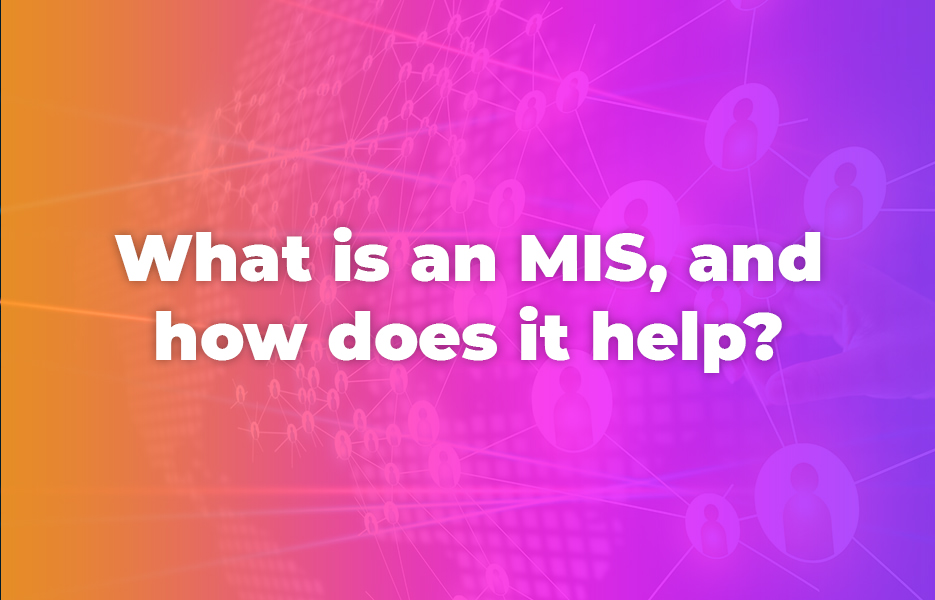
The term ‘MIS’ also covers a number of different platforms, each specialised to a slightly different areas of business. Essentially though, an MIS is designed to pull together and keep track of the data from all the systems and sources you use, and to make it available for you in one place.
Properly collated and organised data can be used to accurately predict the most likely potential actions, and allow you to identify the most promising courses of action for the future of your business. An effective MIS will let you see where things are going well, help you keep things on track, and also helps you to expose problem areas early. Ideally, when used well, an MIS will help you to see WHAT is working well, rather than depending on your instincts. Not to say that our instincts will mislead us, but if you’re spending money, sometimes it’s good to be sure!
So if you’re looking to reduce wastage, take advantage of new opportunities, or of course, avoid potential failure (who doesn’t want to avoid failure?!) then an MIS can provide the information you need.
Modern systems are powerful and sophisticated and can present your data in many ways, so you can access the exact information that you need to know about your business. For example:
- Lists of figures and ledgers for the accounts
- Bar charts and pie charts
- Animated graphs showing changes over time for multiple series of data
- Changing figures or percentages against text, video or images that represent the context
An MIS can also illustrate the rates of defects over time, so you can see if the percentage of orders sent with mistakes are growing at the same rate order volumes increase, or possibly even falling as your team improve. It can even tell you which person is responsible (or at least working) at the time when an expensive error occurs, or who corresponds to the shifts with the most errors. That means you can try and recover costs, or provide additional training before something REALLY expensive goes wrong and compromises your potential profits.
What types of MIS are there?
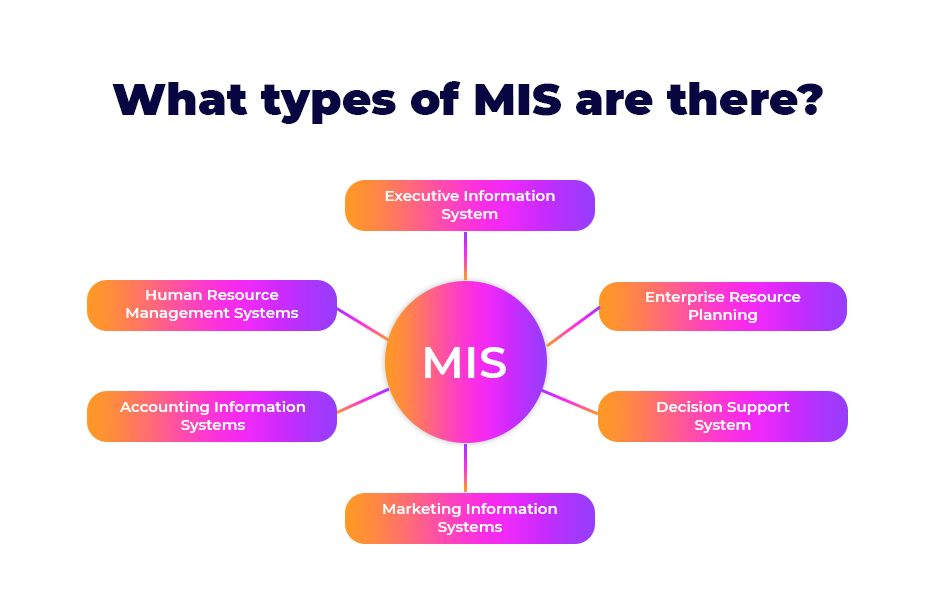
Most new businesses start today utilising technology readily available – even if that means just starting with Excel. Tracking and analysing data on PCs is much simpler and less time consuming than making changes by hand. This is because automated systems can drive change faster than you can, and are less prone to human errors, so using MIS enable you to minimise wastage and mistakes.
An Executive Information System (EIS) is a reporting tool that provides:
- Quick access to higher level summaries
- Access to reports from all company levels
- Access to reports from all departments (including accounting, human resources and operations)
A Decision Support System (DSS) is mainly used by middle and higher management:
- Compiling information from a wide range of sources
- Support specific problem-solving and decision making
A DSS is used mostly for quickly reviewing and addressing problems that are harder to identify, by helping to define them better before an answer is investigated and settled upon.
There are also more specialised MIS types that may come into play as your business grows:
- Marketing Information Systems (MIS) are designed specifically for managing the marketing and promotion aspects of your business operations
- Accounting Information Systems (AIS) are focused on specialised accounting functions and methods, as your revenues and potential liabilities increase
- Human Resource Management Systems (HRMS) are used for managing personnel matters, and encompass references and safety aspects around legal issues and best practices
- Enterprise Resource Planning (ERP) software is designed to manage and optimise the flow of information, not just between internal business systems, but in regard the connections your business has with external platforms and organisations. They are designed to move and control large flows of data, and can ensure other MIS systems interact correctly when the volumes of data exceed their own limitations
You might also consider implementing an Office Automation System (OAS) for automating workflows and eliminating bottlenecks. An OAS may be implemented at any level of management, and helps you to save time by being always available for common issues. A ‘man in the loop’ will still be needed for more unusual issues or decisions, of course.
An OAS will often work alongside one or more MIS systems, depending on the size and needs of the business.
Why does a business need an MIS?
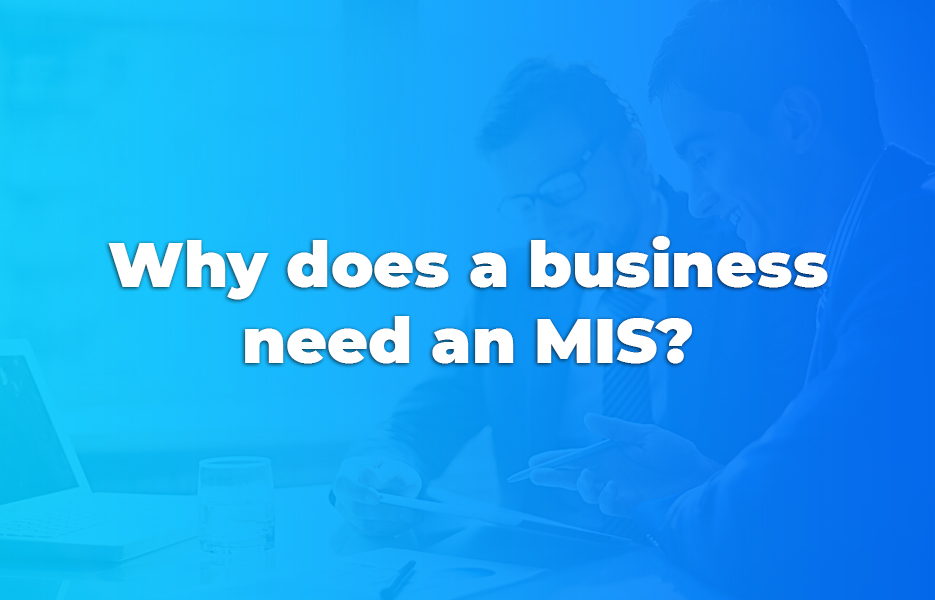
Businesses are increasingly complex in the information they manage and use, especially in the world of eCommerce.
Each marketplace is a complex piece of software with its own quirks and needs, and sellers may deal with 5 or more, all at the same time! Just getting all the orders downloaded, passed to suppliers and shipped quickly can be hard enough. But you also need to send tracking numbers to the platform, on the right orders, so your customers can track them, and you don’t get penalised.
In order to get the best results, you want to be selling your products on as many marketplaces at once, but you also need to keep stock levels up to date as you sell in all these different places, so you don’t sell stock you don’t have. It’s a headache that many people already solve with complex software of their own.
Each of these marketplaces and pieces of software track the same information in slightly different ways. Harnessing and manipulating all that data to identify problems and opportunities is challenging, especially if you’re not a trained data scientist or analyst!
How does an MIS help me and my business?
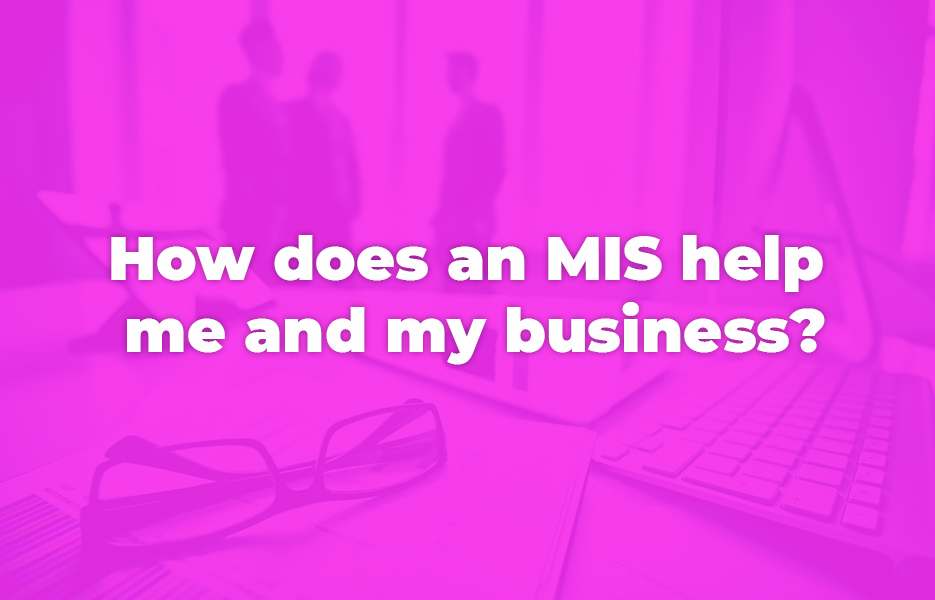
Although MIS systems can be installed on local systems, the most efficient ones today tend to exist as cloud platforms. You and other decision makers can get the information from them via apps and alerts wherever you are, however you want them (or need them) set to. You don’t have to wait for a printout, or for a meeting so that your business analyst can read PowerPoint slides to you. You might decide to receive warnings for unusually high sales volumes, or spikes in complaints, so that you can react before things get out of hand.
An MIS will also offer the ability for regular reports to be run for given periods, allowing you to do quarterly reports, to identify and update KPIs, and so on. They’re just using the availability of more power, more information, and more options to communicate about it in real time.
Just as eCommerce and business is evolving as society and technology are, so are the tools and systems we use to manage and enhance our ability to keep up and understand what we are achieving. The quicker we can respond to changes, whether positive or negative, the less damage is done, or the greater the potential rewards for your business.
When should I start thinking about which MIS is for me?
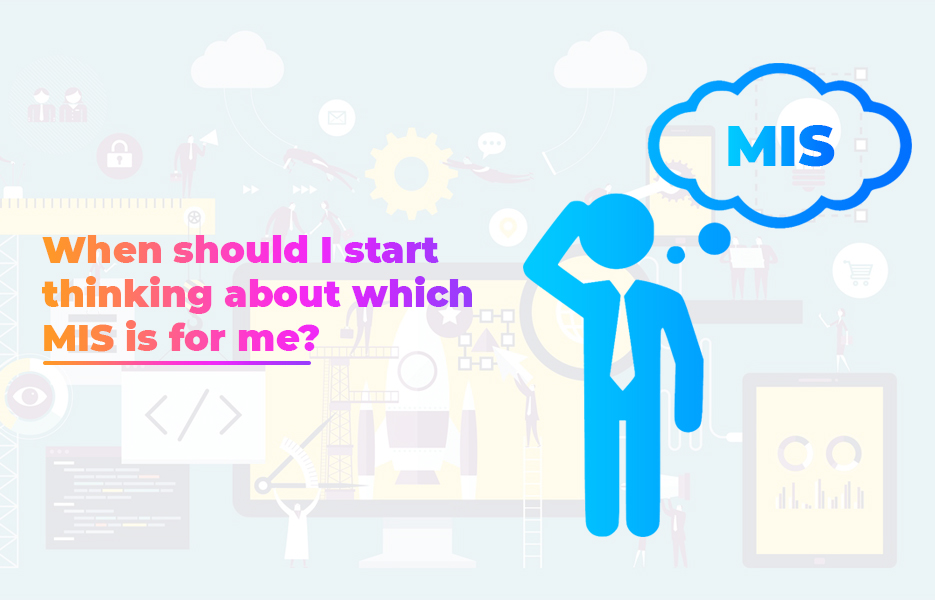
As you start to find that your original reports aren’t giving you the level of detail you need, or need to be broken down into more granular segments for one or more areas, that’s the time to start doing research on MIS platforms and the options that might work for you.
Try and find one that has the potential to keep growing with you and which makes sense to you when data is presented and when bringing in data. It may be that what you start with isn’t a full MIS system, but establishing good habits about reviewing and centralising data – not to mention making decisions that are backed by, or informed by, reliable data – is a very important step.
You will need to carefully plan when you can introduce the MIS to your business – you don’t want your everyday operations to be impacted upon negatively, even if the MIS will give you the ability to increase your capacity in the longer term. Unless you have a permanent IT staff member or team, or you yourself have experience and are confident that your team can spare you while you’re learning and configuring, you’ll need to choose your implementation date carefully. Think about when trading is typically quieter, or when you won’t be using your other systems quite as extensively.
Do I need to start with a full MIS?
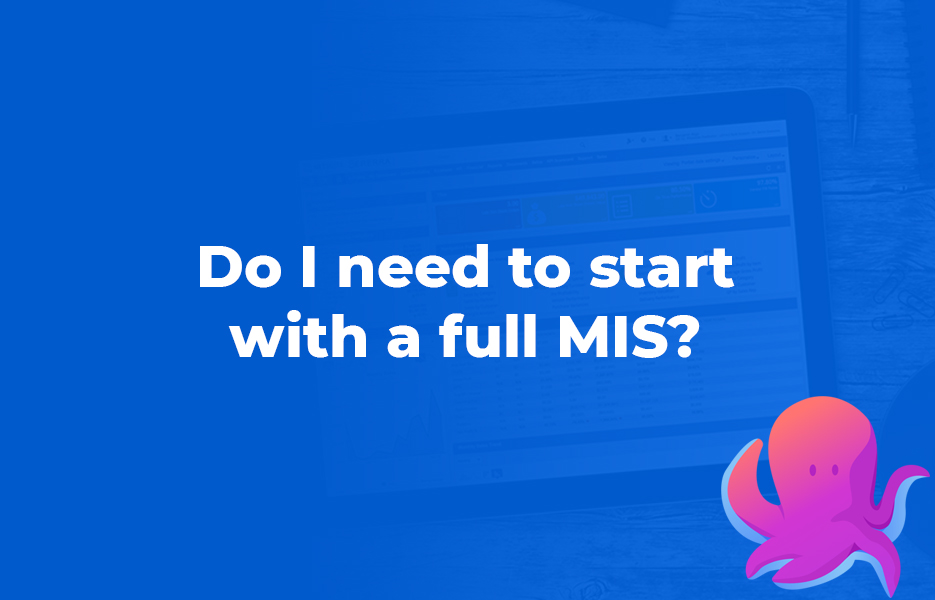
When you start your businesses, especially in eCommerce, you might be building your sales in the cracks of time in your life – on a commute, when the kids have been put to bed, or in your lunch break, for example. The needs of your business haven’t become all that complex yet. While you’re still in the early stages, dealing with lower volumes of orders, smaller ranges of products, and fewer marketplaces or websites, tools like CSV files, Excel and macros can be used to identify trends, and many free, or inexpensive tools can provide quick results, regardless of your technical ability. There are plenty of free and cheap courses, or YouTube clips available on those tools.
Businesses that are already beyond the start-up phase, or those that are long-established will need to assess what they need their MIS solution to provide for them, and how feasible it is to implement. MIS solutions can be expensive, but the returns can far outweigh those costs in most cases – so be sure to do research carefully, and choose solution that fits your needs best now, and in the medium to long term.
While you’re looking into your MIS solutions, it’s well worth reading articles discussing the benefits of setting and monitoring KPIs (Key Performance Indicators) in your business. KPIs are simply reasonably ambitious targets for things such as orders received, dispatched, low failure rate, etc, that will allow you to keep your business growing at a good rate by meeting or exceeding them. Later on, you’ll be able to compare those targets to actual performance and be able to moderate them up and down, to reflect the capacity of the business and the team.
KPIs will allow you to evaluate progress and performance easily, and mean that even at an early stage, you are making solid, well thought out decisions about your growth. This means that you will be less vulnerable to impulsive decisions where you think your business is doing one thing, but it is actually behaving a different way. They will also be crucial for you when you’re configuring and starting to use an MIS.
An MIS makes it easier to modify and respond to changes and KPIs in order to drive the business at a realistic rate. When you have the right information to hand, and can compare past performance and potential mistakes, errors etc, to evaluate against best case, worst case and medium (normal) cases for your business.
With the right controls and boundaries, computers are excellent at analysing and monitoring data at far higher speeds than a human being, and without getting distracted. Relying on your MIS to handle incredibly complex issues and reporting means that as your data becomes more and more complex, the talent on your team can use that information to resolve issues and grow the company further. You don’t want your stars bogged down by mundane concerns, after all – you want them helping you to achieve your goals! So, our key takeaways:
- The function of an MIS is to increase the performance of your business, making it more efficient, which helps to increase your profits, thereby making the business itself worth more
- The additional value the MIS provides should exceed the cost of the MIS itself
- New businesses should consider free, or inexpensive tools to provide functionality until their capacity and need has grown sufficiently
- There are different types of tools available that provide different types of functionality – businesses should carefully assess their needs and identify the system that suits their requirements best
- Combining the use of KPIs with your MIS enables businesses to measure their success more accurately, and to adjust goals accordingly.
If you’re starting your business in eCommerce using DropShipping, look for a platform that provides some of the reporting features that you need initially, so that you don’t have to look for, and pay for an MIS too soon. Avasam provides you with plenty of reporting features for your business, and your account is free until you’re selling more than 10 items per month. Sign up and take a look here – and if you’ve got questions, email us on [email protected] or chat with the team on live chat during office hours.

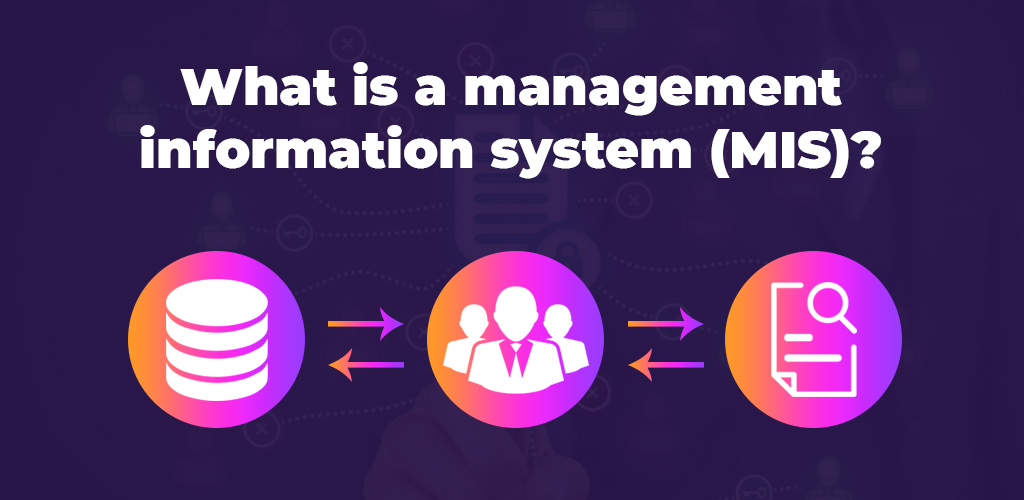





DropShip products from verified suppliers to diversify your inventory and scale your eCommerce business